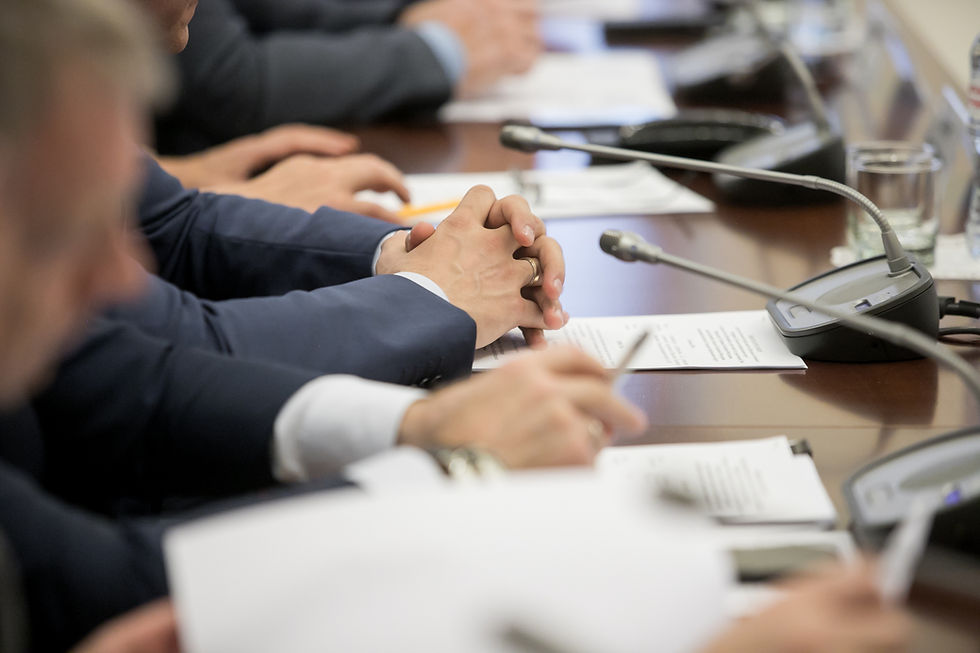Guest Insights: The Current California Drought
- Steve Coker, CFP

- Apr 17, 2015
- 4 min read

Guest Author: Robert Eranio, President of Associated Water and Water Expert
On April 1, 2015, Governor Brown issued an Executive Order (Order) calling for a 25 percent reduction in consumer water use in response to the historically dry conditions throughout the state of California.
The Governor’s Order also includes mandatory actions aimed at reducing water demands, with a particular focus on outdoor water use. In addition to the broad call for mandatory use reductions, the Order announces initiatives to:
· Remove and replace 50 million square feet of turf with drought-tolerant landscape options
· Support rebate programs for water efficient devices
· Restrict water use on commercial, industrial, and institutional properties in order to achieve 25 percent reductions in potable water use
· Prohibit irrigation of ornamental turf on street medians with potable water supplies
· Prohibit irrigation of new construction with potable water unless drip or micro-spray systems are used
· Direct water suppliers to develop rate structures and pricing mechanisms to maximize water conservation consistent with statewide water restrictions.
In case you may not have been following news or weather patterns for the past four years, here is why the Governor has issued the order. 2014 was a historically dry year in the State of California. According to the U.S. Drought Monitor, an estimated 58 percent of California was in “Exceptional Drought Conditions,” the worst category possible, with over 80 percent of California in “Extreme Drought Conditions.” Hydrologic conditions in 2015 have continued this severe dry trend. 2015 is the fourth consecutive drought year and the seventh dry year out of the last eight in California. The water year started with improved conditions, but the latter half of the winter has produced little additional snowpack. In fact, for the year to date, statewide snowpack is currently at its lowest level in the 150 year recorded history.
The record dry and hot conditions of 2014 significantly impacted the water resources of both the State of California and many Municipal water suppliers, especially in the Central Valley. Northeast of Bakersfield, falling groundwater levels is causing land subsidence by as much as 1 foot per year, damaging water canals, roads, and underground infrastructure.
Southern California has a proven track-record of aggressively implementing water conservation. Potable per capita water use in the region has declined by about 24 percent since 1990. These water use reductions have allowed the region to add an additional 5 million people while actually reducing reliance on imported supplies; but in a region that imports approximately 65% of our water supply, we are not immune to the drought.
Locally, wells are pumping water from as much as 200’ below sea level around the Camarillo Airport and along Rose Avenue from the 101 Freeway to Channel Islands Blvd.
This is causing seawater intrusion to increase making water resources along the coast unusable. It takes 40 gallons of fresh water to flush and reclaim 1 gallon of seawater intrusion. Groundwater pumping reductions have been ordered by local regulatory agencies, and that action is starting to impact local farming practices. We are starting to see crop rotations from water-intensive berries to low water demand crops or the outright fallowing of land so water resources can be transferred to grow high-value crops.
There is a strong inverse correlation for how much water is used as compared to how rain falls. The more it rains, the lower the water demand. Around Oxnard, Camarillo, Santa Paula, Moorpark and Ventura, the long-term average annual rainfall is about 14.75” per year, but the long-term water demand is 18.5”. That means unless we receive 125% of normal rainfall, there is a water deficit that must be met with reserves and storage. Given the severity of the current drought, it is estimated we would need 3 consecutive years of 24” – 28” of rain to reverse the overdraft that has occurred and stop the current seawater intrusion; not reverse, but just stop the intrusion progress.
One thing is certain; we cannot “Conserve” our way out of this situation. New water supplies must be developed, including recycled water, in-direct potable reuse, and direct potable reuse. Recycled water is in use now and is being expanded to many golf courses, parks, schools and agricultural lands. In-direct potable reuse takes recycled water to the next level of treatment and then blends that water before delivery. The blending can occur in an open reservoir or be injected into the ground where it is extracted 6-months later along with natural groundwater. Direct Potable Reuse is where the treated waste-water is processed through advanced treatment including reverse osmosis, ultraviolet light, ozone, and hydrogen peroxide, and then delivered to the water distribution system for delivery to your house. This technology has been in use in Europe for years and starting in September 2014, a 2 million gallon per day facility in Texas is now online.
About the Author:
Robert is CEO/Owner of Robert’s Associated Water, Inc., which is a private contractor providing contract operations to small private water utilities, specializing in Operations, Maintenance, and Cross-Connection Control. He is a long-standing Board Member and advisor to the United Water Conservation District (UWCD). The UWCD works to manage, protect, conserve and enhance the region’s water supply. Since 1995, Robert has also been the General Manager to Crestview Mutual Water Company, a private, non-profit, water utility located in Camarillo.





Comments